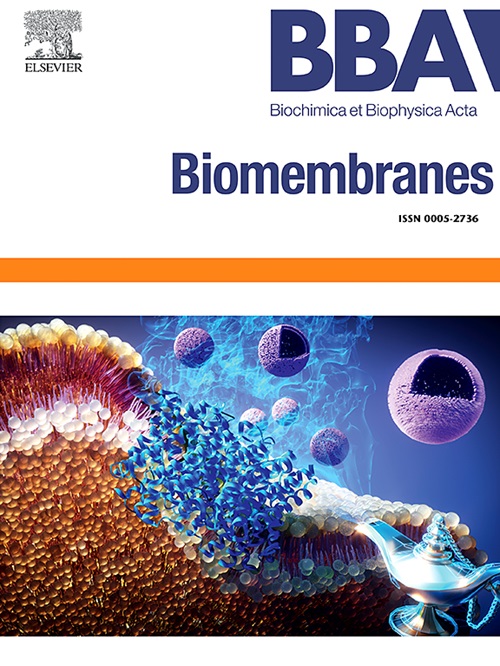酸性单胞体是拉沙病毒融合结构域结构研究的合适膜模拟物
IF 2.5
3区 生物学
Q3 BIOCHEMISTRY & MOLECULAR BIOLOGY
引用次数: 0
摘要
拉沙病毒(LASV)是影响人类最普遍的沙粒病毒,具有很高的大流行潜力。LASV的遗传物质通过由LASV融合域(FD)启动的膜融合传递到宿主细胞中。然而,LASV FD的分子细节,特别是其与宿主细胞结合后的结构,仍然缺乏表征。这可归因于缺乏可行的膜模拟物来有效地稳定LASV FD用于结构研究。在这里,我们证明了LASV FD的结构根据膜模拟物的类别有很大的不同。特别是,通过CD光谱,我们发现LASV FD需要带电的膜模拟物,如两性离子或阴离子洗涤剂胶束,在低pH下采用螺旋构象,但在阴离子脂质存在时,特别是洗涤剂胶束LMPG和酸性单束存在时,螺旋含量最高。此外,我们发现LASV FD在CHAPS、DPC、LDAO、LMPG和酸性小柱的核磁共振光谱上被很好地分辨出来,其中LMPG和酸性小柱的峰分辨率最高,而LMPG的酸性小柱的峰更清晰。总之,我们的研究结果表明,酸性双胞体是稳定LASV FD的最佳膜模拟物,因此可以进行结构研究。本文章由计算机程序翻译,如有差异,请以英文原文为准。

Acidic bicelles are a suitable membrane mimic for structural studies of the Lassa virus fusion domain
Lassa virus (LASV) is the most prevalent arenavirus afflicting humans and has high pandemic potential. The genetic material of LASV is delivered into the host cell via membrane fusion initiated by the LASV fusion domain (FD). However, the molecular details of the LASV FD, particularly its structure after association with the host cell, remain poorly characterized. This can be attributed to a lack of a viable membrane mimic to effectively stabilize the LASV FD for structural studies. Here, we demonstrate that the structure of the LASV FD widely varies based on the class of membrane mimic. In particular, through CD spectroscopy, we found that the LASV FD required a charged membrane mimic, such as zwitterionic or anionic detergent micelles, to adopt a helical conformation at low pH, but has the highest helical content in the presence of anionic lipids, particularly the detergent micelle LMPG and acidic bicelles. Moreover, we reveal that the LASV FD was well resolved on NMR spectra in CHAPS, DPC, LDAO, LMPG, and acidic bicelles, where LMPG and acidic bicelles had the sharpest peak resolution, but more defined peaks were noted in acidic bicelles over LMPG. In conclusion, our findings indicate that acidic bicelles are the optimal membrane mimic for the stabilization of the LASV FD such that structural studies can be conducted.
求助全文
通过发布文献求助,成功后即可免费获取论文全文。
去求助
来源期刊

Biochimica et biophysica acta. Biomembranes
生物-生化与分子生物学
CiteScore
8.20
自引率
5.90%
发文量
175
审稿时长
2.3 months
期刊介绍:
BBA Biomembranes has its main focus on membrane structure, function and biomolecular organization, membrane proteins, receptors, channels and anchors, fluidity and composition, model membranes and liposomes, membrane surface studies and ligand interactions, transport studies, and membrane dynamics.
 求助内容:
求助内容: 应助结果提醒方式:
应助结果提醒方式:


